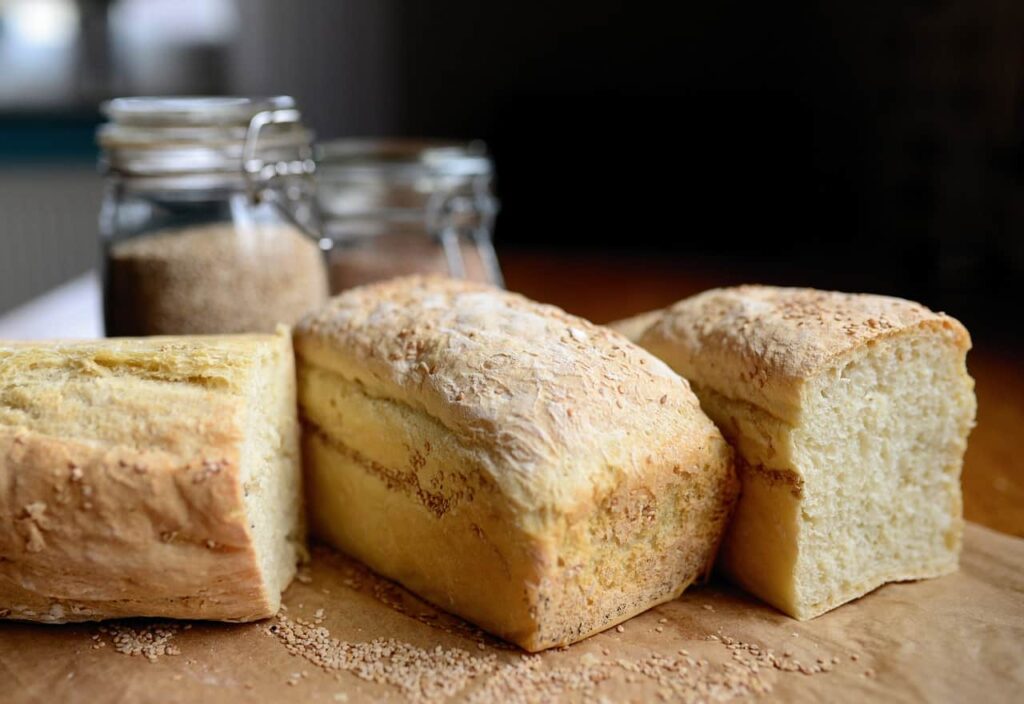
9 Side Effects of Eating White Bread you Need to Know
Not all readily available food is healthy for your body’, one such food item easily found in almost every household is White bread.
However, even though it is easily accessible and has got into the eating habits of many people in our country, especially during breakfast, it is not necessarily a healthy eating option.
If you can avoid white bread in your diet, you shall take that decision right away. Here we tell you why white bread is not a good option for your health and could just be your biggest food enemy.
How is white bread processed?
For making white bread, wheat flour is bleached using different chemicals which make the flour appear white. Chemicals like benzoyl peroxide, chlorine dioxide, and potassium bromate are added to the flour followed by refined starch. These chemicals are used in a small amount, which is not hazardous to health.
The nutrient value of white bread
The calorie content in all types of bread is almost the same. The difference is mainly in the nutrient content. A slice of white bread contains 77 calories, but it is high in glycemic index. As white bread is highly processed, the nutrient content in it is very low.
Why is White Bread unhealthy for you?
The flour used in white bread is often bleached after the natural oils from it are extracted to make it long-lasting, by the use of chemicals such as potassium bromate, azodicarbonamide, or chlorine dioxide gas to remove any slight, natural yellow shade, which can cause severe health problems like obesity, heart diseases, and diabetes.
Preservatives are added, which helps the bread stay fresh for a longer period of time.
Here are some dangers of eating white bread:
1. Spikes blood sugar level
White bread has a high glycemic index, that means it releases glucose quickly and can spike the blood sugar level. Having white bread is particularly bad for people suffering from diabetes as sudden fluctuation in the blood sugar level can be dangerous. Constant high glucose in the blood may make your body enter a hyperglycemic state.
This condition may lead to serious health complications like cardiovascular disease, nerve damage, and kidney failure.
2. It may cause constipation
White bread is made from processed grains such as white rice, white pasta, and many pastries and baked goods.
When the grains are processed, it means that the bran and seed parts have been removed from the grains, which contain a large amount of fiber that facilitates digestion and excretion of waste products from the intestine. Therefore, the absence of bran in white bread may contribute to constipation.
3. Weight gain
If you want to maintain your body weight and fitness level, then cross white bread from your grocery list. White bread can contribute to weight gain, which may not be beneficial for weight watchers. Made from refined carbs, this type of bread can spike the level of sugar in your blood, which is mostly not utilised immediately. The body eventually stores all the extra glucose present in the body fat leading to weight gain. High blood sugar levels can also increase the sugar craving that can sabotage your weight loss goal.
4. May cause irritable bowel syndrome
If you suffer from digestion problems or irritable bowel syndrome it is best you steer clear of bread. The high fructan content in wheat bread may be responsible for some of the symptoms you’re suffering.
Fructan tends to ferment excessively in your intestines depending on your gut flora. If you are the sensitive type, eating wheat bread can result in abdominal pain, bloating, diarrhea and constipation
5. Mood swings
The food made from white bread might be tasty but can negatively affect your mood. A study found that consuming white bread can lead to depression in women above 50s. The person may experience mood swings, fatigue, and other symptoms of depression.
6. Low in essential nutrients
Bread is not as nutritious as other carbs like veggies, quinoa, oatmeal, potatoes, brown rice, and so on. Even the whole wheat grain bread is disappointing when the nutrition contents are examined.
Not only is bread low in nutrients, it also causes the decline in the absorption of other real foods.
Plus, bread doesn’t possess the essential amino acids required for muscle building and maintenance.
7. Your skin could breakout
Yep, eating white bread every day for lunch could be the reason your skin constantly flares up. Why? Believe it or not, it goes back to the glycemic index. According to research, various small studies suggest that following a low GI diet may reduce the amount of acne you have in part because it eliminates spikes in blood sugar.
Blood sugar spikes also cause inflammation to appear throughout your body, and both sebum and inflammation are culprits of acne formation.
8. May cause skin irritation and acne
According to the American Academy of Dermatology Association, several small studies indicate that following a high-sugar diet might increase the amount of acne you have.
When the blood sugar level rises, the body increases its production of fats that contribute to skin irritation and acne. In addition, high blood sugar also causes inflammation throughout the body, which increases the chance of skin irritation and acne.
9. Increased risk of type-2 diabetes.
When blood sugar elevates rapidly, excess insulin is released into the bloodstream to push the sugar into the cell. When this occurs on a regular basis, cells become more insulin resistant, making it harder over time to control blood-glucose (sugar) levels.
Research published in 2010 in the American Journal of Clinical Nutrition supports this, finding that people who consumed several servings of whole grains per day — and limited intake of refined grains — had less of a type of fat that increases the risk of type 2 diabetes.
